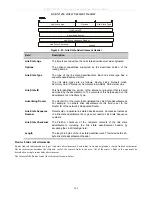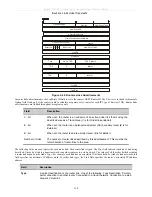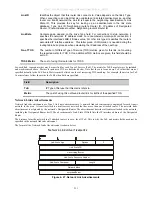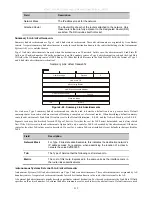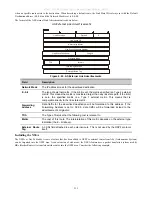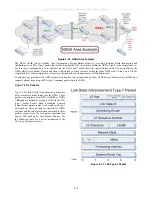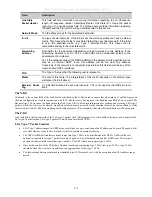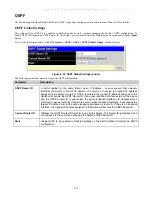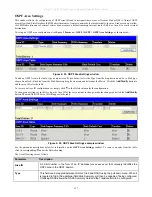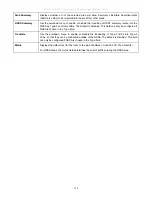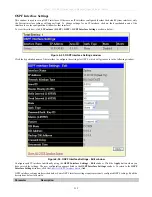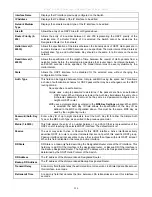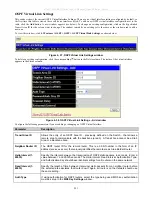
xStack
®
DGS-3600 Series Layer 3 Managed Gigabit Ethernet Switch
Parameter
Description
Area ID
Allows the entry the OSPF Area ID for which the routing information will be aggregated. This
Area ID must be previously defined on the Switch.
Network Number
Sometimes called the Network Address. The 32-bit number in the form of an IP address that
uniquely identifies the network that corresponds to the OSPF Area above.
Network Mask
The corresponding network mask for the Network Number specified above.
LSDB Type
Specifies the type of address aggregation. The user may choose
Summary
or
NSSA-EXT
,
depending on the type of aggregation being configured. The default setting is Summary.
Advertisement
Select
Enabled
or
Disabled
to determine whether the selected OSPF Area will advertise it’s
summary LSDB (Network-Number and Network-Mask).
Click
Apply
to implement changes made.
OSPF Host Route Settings
OSPF host routes work in a way analogous to RIP, only this is used to share OSPF information with other OSPF routers. This is
used to work around problems that might prevent OSPF information sharing between routers. To add a new OSPF Route, click the
Add
button. Configure the setting in the window that appears. The
Add
and
Modify
windows for OSPF host route settings are
nearly identical. The difference between them is that if you are changing an existing configuration you will be unable to change
the Host Address. To change an existing configuration, click on the corresponding Modify button in the list for the configuration
to change and proceed to change the metric or area ID.
To configure OSPF host routes, click
L3 Features >
OSPF> OSPF > OSPF Host Route Settings
, as shown below:
Figure 4- 61. OSPF Host Route Settings window
Use the window below to add an OSPF host route. To remove an entry from the table, click its corresponding
under the Delete
heading.
Figure 4- 62. OSPF Host Route Settings – Add window
Specify the host route settings and click the
Apply
button to add or change the settings. The new settings will appear listed in the
OSPF Host Route Settings
window. To view the previous window, click the
Show All OSPF Host Route Entries
link to return to
the previous window.
The following fields are configured for OSPF host route:
Parameter
Description
Host Address
The IP address of the OSPF host.
Metric (1-65535)
A value between
1
and
65535
that will be advertised for the route.
Area ID
A 32-bit number in the form of an IP address (xxx.xxx.xxx.xxx) that uniquely identifies the
OSPF area in the OSPF domain.
223

